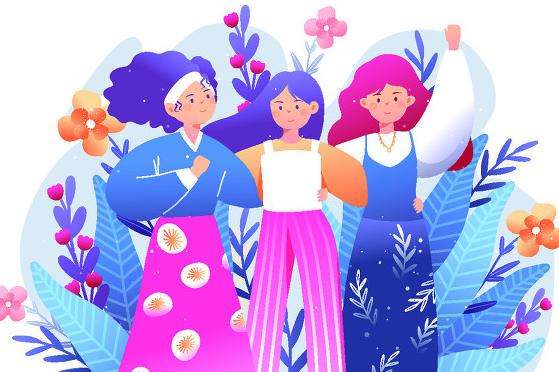Age-old art form gets new lease on life


Paper-cutting expert uses her skills and works to reflect home area's history and culture, both ancient and modern. Zhang Yi reports from Turpan, Xinjiang Uygur autonomous region.
Holding a pair of scissors in her right hand and a sheet of red paper in her left, Ji Yulan created an image of a smiling child in just five minutes.
The 53-year-old craftswoman, an inheritor of the intangible heritage of paper-cutting from the Xinjiang Uygur autonomous region, has been practicing the art form for more than 40 years.
Exquisite red paper-cut decorations stand out against her white dress, including the image of a child on her chest and two clusters of grape-shaped "earrings" that fall to her shoulders.
In 2009, the traditional Chinese folk art of using scissors or a knife to produce patterns on colored paper was included in the UNESCO Representative List of the Intangible Cultural Heritage of Humanity.
Ji was born and raised in Turpan, a city in Xinjiang where the oldest surviving paper-cut pieces (from about 1,500 years ago) were found in the 1950s. She is proud of that local history, and has brought the ancient pieces back to life by replicating them.
She formed her attachment to paper-cutting at age 7. Growing up with her grandmother in rural Turpan, Ji was deeply influenced by the old lady's fondness for the art form.
"I will never forget the scenes when my grandma was cutting various patterns that cast shadows on the wall through the candlelight," she said.
Before she retired, Ji devoted all her spare time to paper-cutting work. Even now, she always carries a pair of scissors so she can create whenever she feels the urge.
She draws her inspiration from people's life experiences in Turpan, which is famous for its sweet grapes, and integrates them in her work. Her pieces feature grapes, grapevines and children from the Uygur ethnic group.
"I am moved by the land in which I grew up," she said, adding that as she learns more about the customs and culture of her hometown, the desire to create grows ever more intense.
Her "masterpiece" is a blue-and-white porcelain paper-cut piece that depicts a woman from the Kingdom of Loulan, a vanished civilization on the ancient Silk Road.
The woman, who dominates the center of the image, is flanked by fluttering grape leaves and her headscarf looks like a raisin house, a type of hut where grapes are dried that can be seen all over Turpan.
She holds a pomegranate to her chest, with the closeness indicating the seeds of the fruit that symbolize the unity of China's ethnic groups. Camels depicted below the woman represent Turpan's role as an important stopping point on the legendary trade route.
"In my mind, the woman is like the breeze in March. Her eyes are closed, but the sweetness of the grapes from her hometown is in her heart," the paper-cut artist said of her creation.
Characteristics, ideas
Ji said a complete paper-cut work needs to combine linguistic symbols, regional characteristics and thematic ideas. Each of her works has a story behind it.
A symbol that often appears in her work is the saw-tooth pattern. Shaped like a flame, it symbolizes Turpan, which is known as "the city of fire" because temperatures can reach 50 C in summer and rain is absent almost all year, resulting in the renowned sweet grapes.
In 2019, Ji started a paper-cutting studio in Grape Valley, a well-known tourist destination in the city. To promote protection of local intangible culture heritage, the valley's administration has provided free space in a bazaar for more than 20 craftspeople like Ji.
Last year, at a fair held in the valley and dedicated to related items, many visitors were attracted to a paper-cut series Ji had created with the theme of the fight against the COVID-19 epidemic.
One piece depicted a nurse with long, beautiful hair wearing a mask and a protective hat.
Ji was deeply impressed by female medical workers who cut their long hair to ensure a better fit with the protective suits they wore while battling on the front line of the fight.
"Women are charming with long hair, and it took a lot of courage to cut it," Ji said. She created a paper-cut work to illustrate the image, in which a nurse has regained her long hair. She named the piece The Angel in Harm's Way.
She also made paper-cuts of people from other walks of life who fought on the front line. Basic information about epidemic prevention and control, including hand-washing routines and good ventilation, were incorporated in the design to foster awareness of healthy habits.
To promote the paper-cutting culture, Ji regularly teaches in communities and nursing homes. Also, she often visits rural areas to learn about local paper-cutting customs and draw more inspiration.
"The paper-cutting art comes from the people and it should return to the people," she said.
Ji has 12 students, ages 3 to 23. "They discovered an interest in paper-cutting and came to me to learn how to do it," she said, adding that she often encourages her students to create works based on a younger mind set. "I am optimistic about the future of the craft. The younger generation has a real sense of cultural heritage."
She practices her skills every day, and her works hang in her studio and appear in every corner of her home. She has also learned to share her work on the video-sharing platform Douyin, known in the West as TikTok, to expand her audience.
"Choose one thing and love it for a lifetime," she said, employing a saying she likes and always strives to practice.
Liao Yifan, Gao Yaman, Li Yifan, Xing Zuyi in Turpan contributed to the story.




